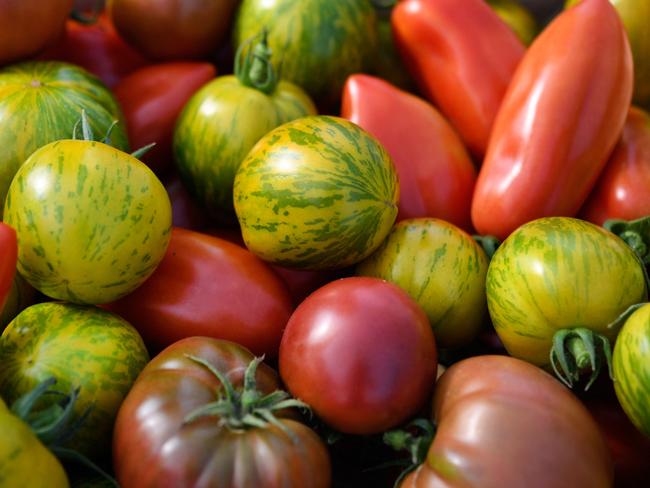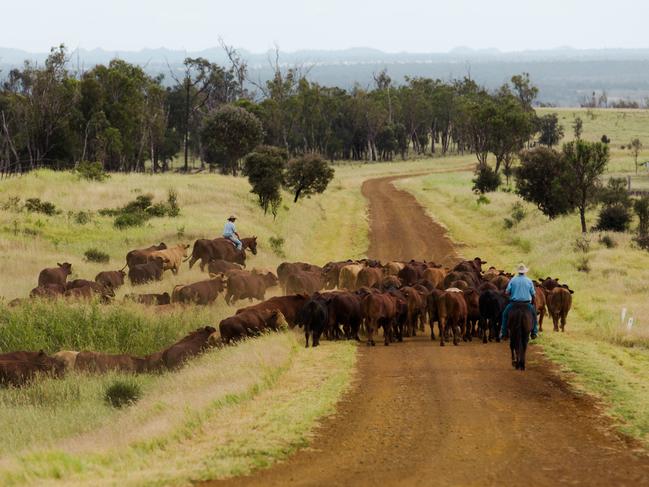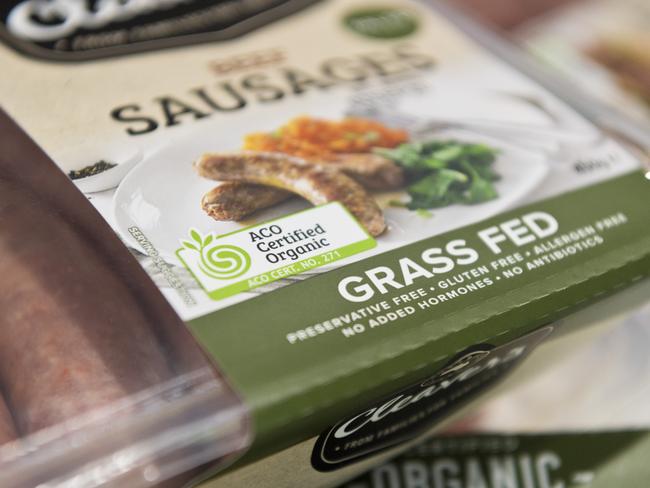Covid-19 sparks a boom in organic grocery purchases
There's a boom in the organic food industry, but is it worth paying more for and how do you avoid being duped?

SmartDaily
Don't miss out on the headlines from SmartDaily. Followed categories will be added to My News.
A widespread switch to organic groceries is among the many pandemic-inspired changes in consumer behaviour.
Millions of Australians have been adding more organic items to their trolley since the beginning of 2020, according to the latest Australian Organic Market Report, a move believed to be spurred by heightened awareness around health and environmental factors.
Household spending on organic products has shot up by almost 13 per cent since the beginning of the pandemic, and almost 40 per cent of organic shoppers increased the amount of organic products they bought, according to the report.
The majority dabble with one or two organic items, usually fresh produce, and as September marks Australian Organic Awareness Month, consumers have been set a challenge: switch just one regular grocery item for an organic alternative.
Here are some of the factors compelling people to choose organic.

HEALTH
The majority of people who choose organic are motivated by health factors, according to the market report.
“Consumers are continuing to prioritise personal and environmental health, and this has been brought front of mind by recent climatic events and the pandemic,” says Australian Organic Limited (AOL) CEO Niki Ford.
Along with what organic foods leave out – namely synthetic chemicals, GMOS, pesticides and fertilisers – studies have pointed to nutritional benefits in organic crops, finding key antioxidants to be up to 60 per cent higher than in conventionally grown crops.
A study published in the British Journal of Nutrition also identified nutritional benefits in organic milk and meat.
It was found to have a more desirable fat profile, with 47 per cent more Omega 3, 18 per cent less saturated fatty acids, and greater amounts of beneficial CLA and vitamins including vitamin E.

ACCESSIBILITY
While the price premium on organic produce has previously been reported to range from 10 per cent up to as much as 300 per cent, the gap is shrinking as more producers come into the market and supermarkets release their own brands.
“Several years ago you’d only find organic products in health food shops or in the health aisle,” says Ford.
“Now, they’re all through the store. Due to the increasing number of certified organic brands, and the competitive nature of the ranges now available, the price difference is not as significant.”

However, according to nutritionist Lyndi Cohen, from The Nude Nutritionist, the priority should be increasing the amount of fruit, vegetables and whole foods we eat, regardless of their organic status.
“Only four per cent of people eat enough fruit and vegetables – let’s first focus on hitting these targets, then we can fine-tune the process,” she says.
“Eating organic is a privilege, if people have a budget for it, and it makes them feel good, it’s a great thing to do. For me, I prefer to spend that extra money on gourmet or interesting ingredients, which ultimately help me eat more healthily.”
While she rarely spends extra to buy organic ingredients, Cohen gets her dose of organic produce from her own backyard.
“I get a lot of my herbs and leafy greens from my garden,” she says.
“I use all organic fertilisers and don’t use pesticides – it’s DIY organic.”

VARIETY
As the range of organic products expands, embracing an organic diet doesn’t mean having to overhaul your cooking style or abandon convenience foods, says Paul da Silva, spokesperson for organic meat brand Cleaver’s Organic.
“You can get organic hotdogs and chicken nuggets,” he says.
“You’ll see a big difference on the ingredients list – it’s shorter, and you’ll actually be able to understand what’s on there.”
For consumers dabbling in organic meat, he suggests starting with everyday recipes, such as spaghetti bolognese: “Switching to organic mince means you can still enjoy the same taste, but gain the benefits of organic”.
ENVIRONMENT
Australian Certified Organic standards include requirements for biodiversity on farming land, and prohibit use of synthetic chemicals and GMOs.
“As well as the product being free of that, you know that none of these things are being introduced into the environment,” da Silva says.
“This supports the soil health and keeps all the natural mechanisms intact.”
Reduction in chemical usage saves the large amounts of fossil fuels used to produce them, and avoids pollution of groundwater, according to a paper by the Food and Agriculture Organisation (FAO) of the United Nations.
The FAO also notes that many organic farming practices help sequester carbon into the soil.

WELFARE
Animals must be free-range for their meat and dairy products to be labelled as certified organic, with daily access to pastures and a variety of natural foods, as well as direct sunlight and social behaviours.
There are also stringent requirements regarding maximum numbers of animals per sqm.
It isn’t just animals that reap the welfare benefits, adds Alex Mitchell, General manager of the National Association for Sustainable Agriculture Australia.
“What we often don’t talk about is the holistic support provided to our farmers and operators in not exposing them and their workforce to nasty chemicals in their daily work,” she says.

RELIABILITY
The organic industry is predicted to grow to almost $4 billion in the next five years, but unsubstantiated organic labelling is its ongoing nemesis.
Australia is one of the few countries globally that doesn’t legally require certification for businesses to label their products as organic, and the AOL is lobbying the government to tighten regulatory framework around organic labelling.
The majority of Australia’s 3200-plus certified organic businesses use the AOL ‘Bud’ logo, which is one of six government-approved certifying marks.
Looking out for a certification logo provides assurance that the producer is audited regularly in accordance with stringent requirements.
Originally published as Covid-19 sparks a boom in organic grocery purchases



